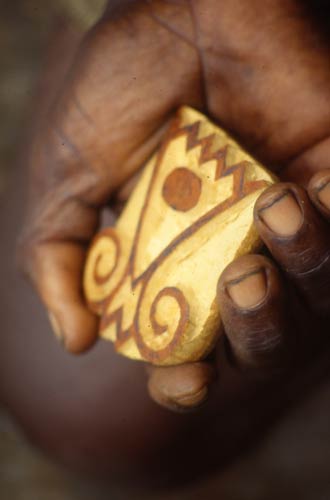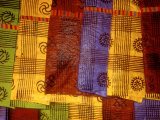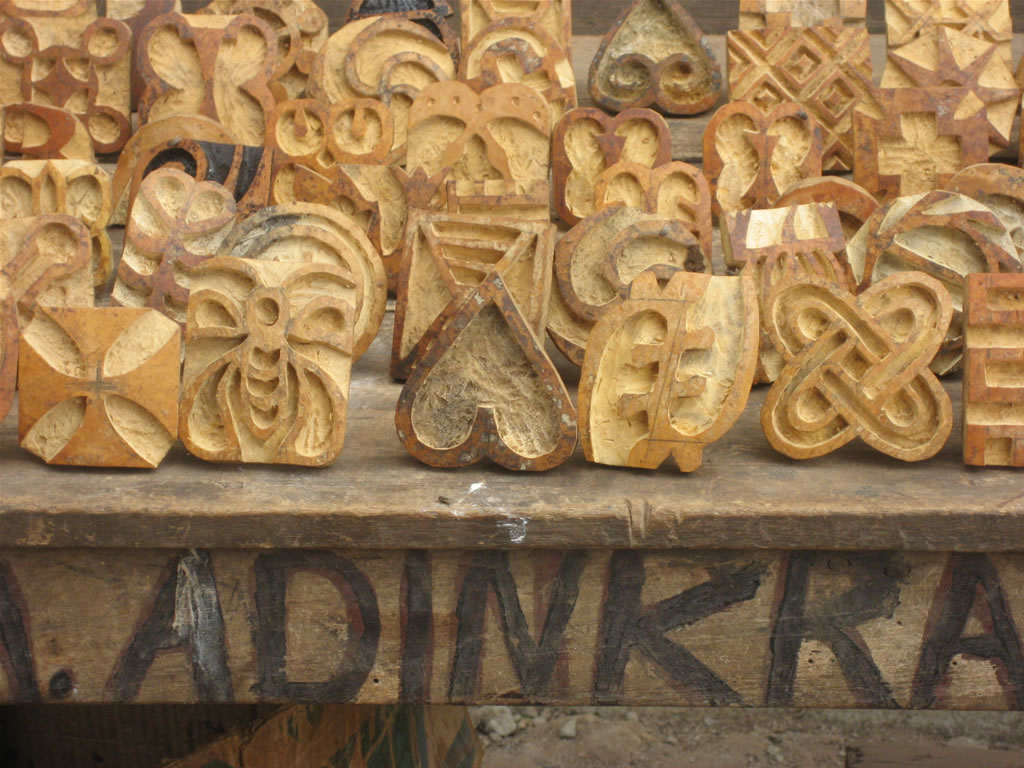Traditional African Textile Design: Adinkra
 |
| Adinkra stamping. From Go Travel Ghana |
African symbols known as Adinkra are found throughout Ghana, a beautiful West African country on the Atlantic Ocean. On cloth and walls, in pottery and logos, these Asante (Ashanti) tribe symbols can be found everywhere.
 |
| Stamp carver Joseph Nsiah of Ntonso, Ghana, holding an adinkra
stamp.From africa.si.edu
|
 |
| Modern commercial Adinkra cloth. From Alison Jones |
Modern fabric Adinkra are often made by woodcut sign writing as well as screen printing. The fabric can be used to communicate evocative messages that represent parts of the makers life or those around them.
 |
| Traditional Adinkra funeral cloth. From the Buchele Adventure |
Traditional Adinkra cloth is a hand-printed fabric made in Ghana. Adinkra cloths were traditionally made for royalty to wear at religious ceremonies.
 |
| Adinkra stamps. From Tien Chu |
In the Ashanti Craft Village of Ntonso, just a short drive north of Kumasi, Adinkra cloth is still hand made. The traditional method of creating Adinkra cloth is by mashing the bark of Bedia trees (transported from North Ghana), boiling and reducing several times until the bark becomes a pitch-like black dye. This dye is called Adinkera aduru, and it is what gives the cloth its name.
Adinkra cloth is stamped and patterned with traditional Ashanti symbols. Each symbol has its own meaning. Using the dye, lines are drawn on the cloth to divide it into squares.
 |
| Adinkra with sewn strips of woven Kente cloth. From Go Travel Ghana. |
Next, Adinkra symbols are carved into calabash gourds, These stamps are then dipped into the dye and rocked onto fabric to create unique and beautiful patterns.
Links:
Adinkra


Do they use swiss laces for all these pieces of clothing?
ReplyDelete